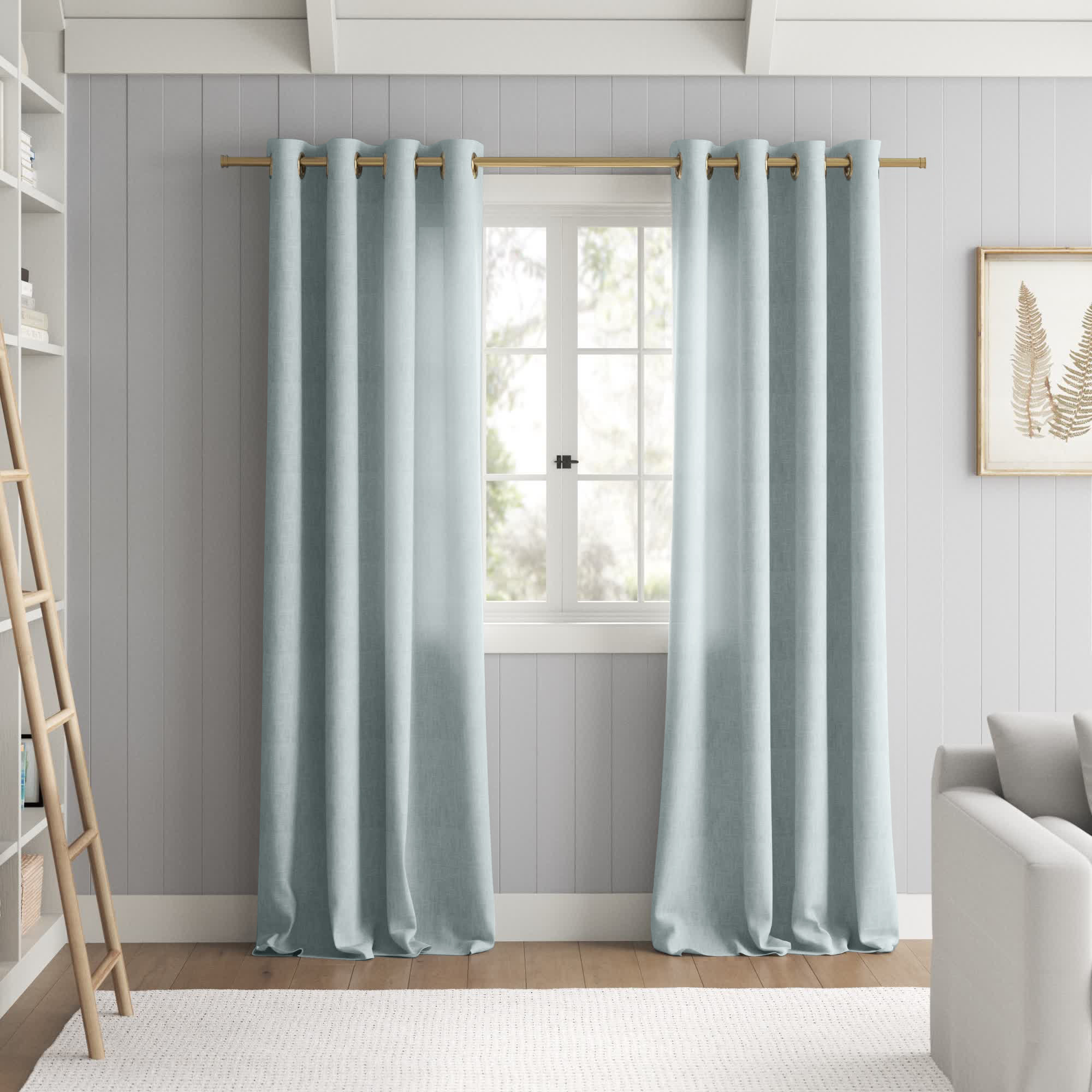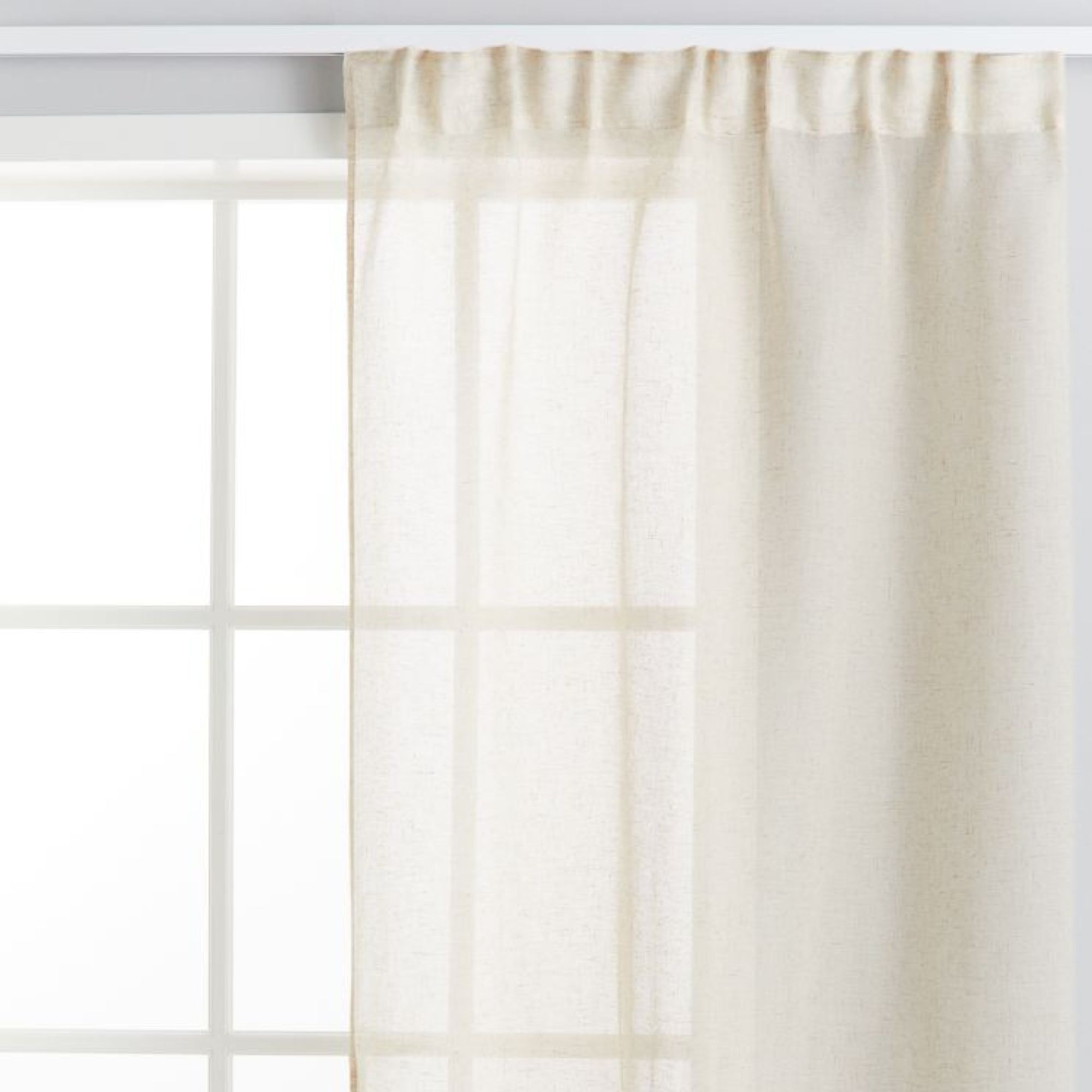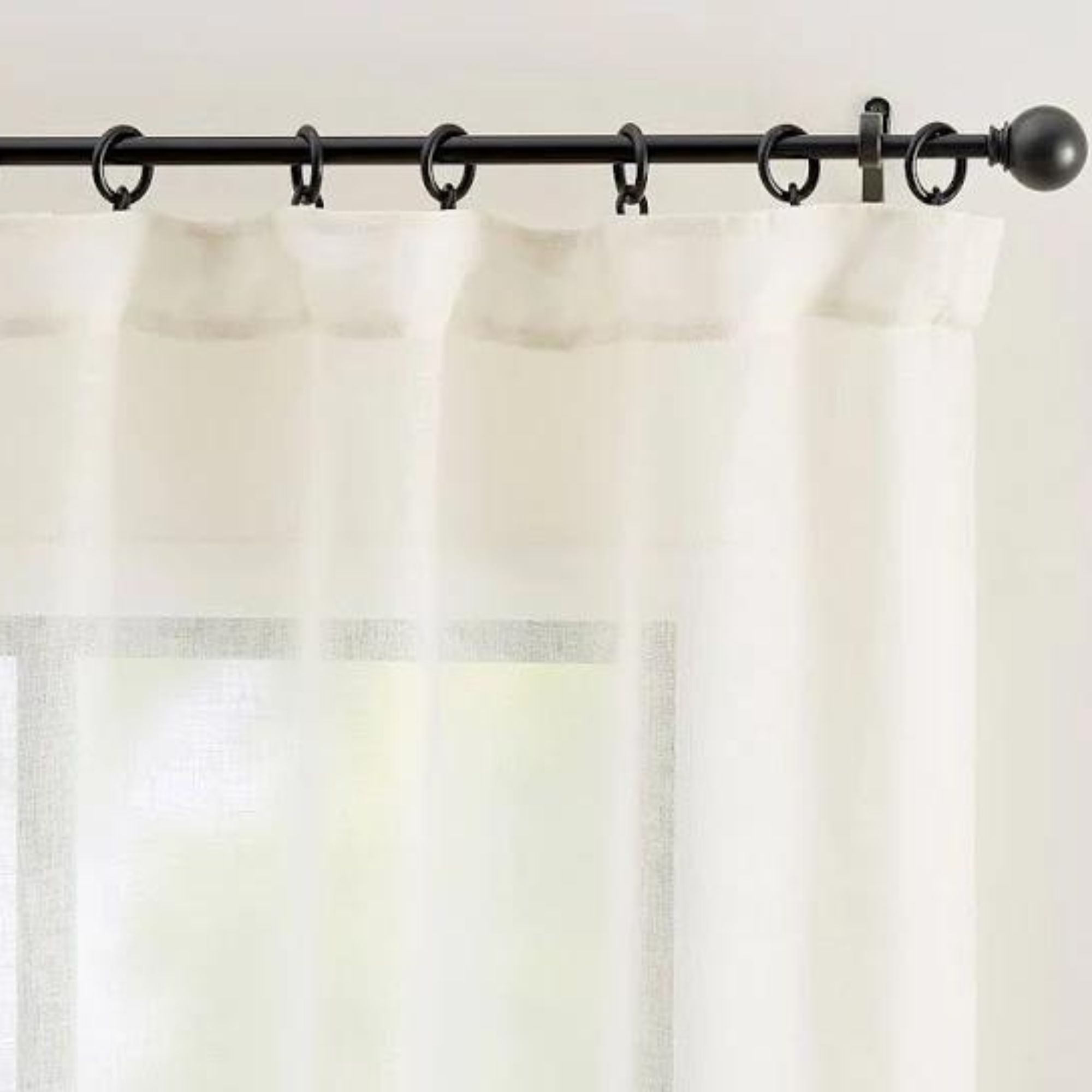Window Treatments For Small Rooms That Will Add Privacy and Filter Light, But That Won't Overwhelm Your Space
These window treatments for small rooms offer the best blend of aesthetics and function for a light, airy space
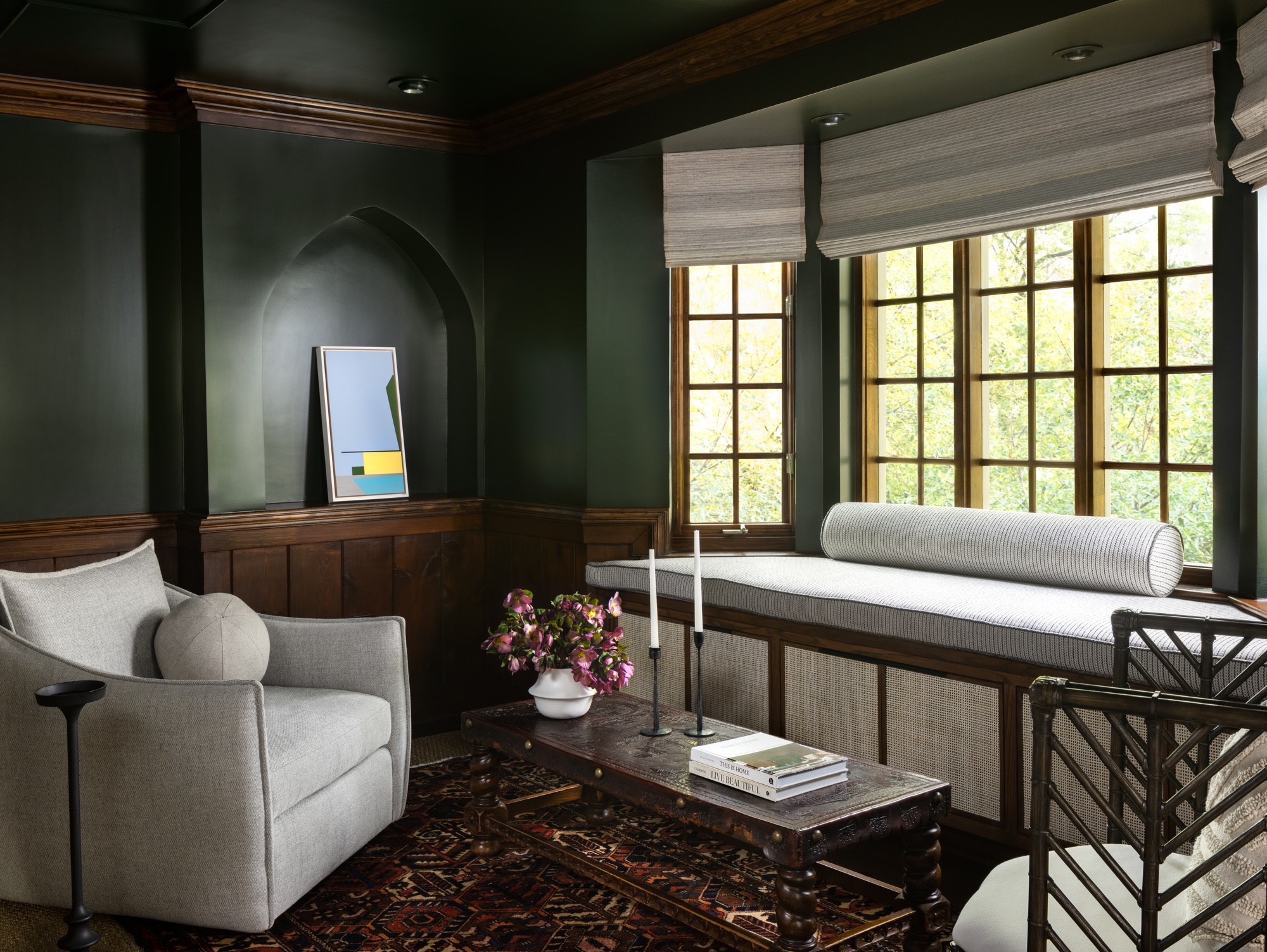
When choosing window treatments for small rooms, the focus on function can often outweigh the aesthetics; but it's definitely possible to strike a balance between design-forward finishes, light filtering effects and privacy points.
'Even in small spaces, window treatments can make a room feel elevated,' says Marie Flanigan, Principal, Marie Flanigan Interiors. 'Natural light is also essential in making a small space feel open and airy, so ensure your window dressings allow for plenty of sunlight.'
Of course, the amount of privacy you need will differ from room to room, which will affect your choice of modern window treatments. You can add black out lining to Roman shades or drapery in a small bedroom, or even layer light, sheer curtains with shades for a soft look that's also high on function.
Keep scrolling for a roundup of go-to designer choices for stylish window treatments.
1. Opt for sheer elegance
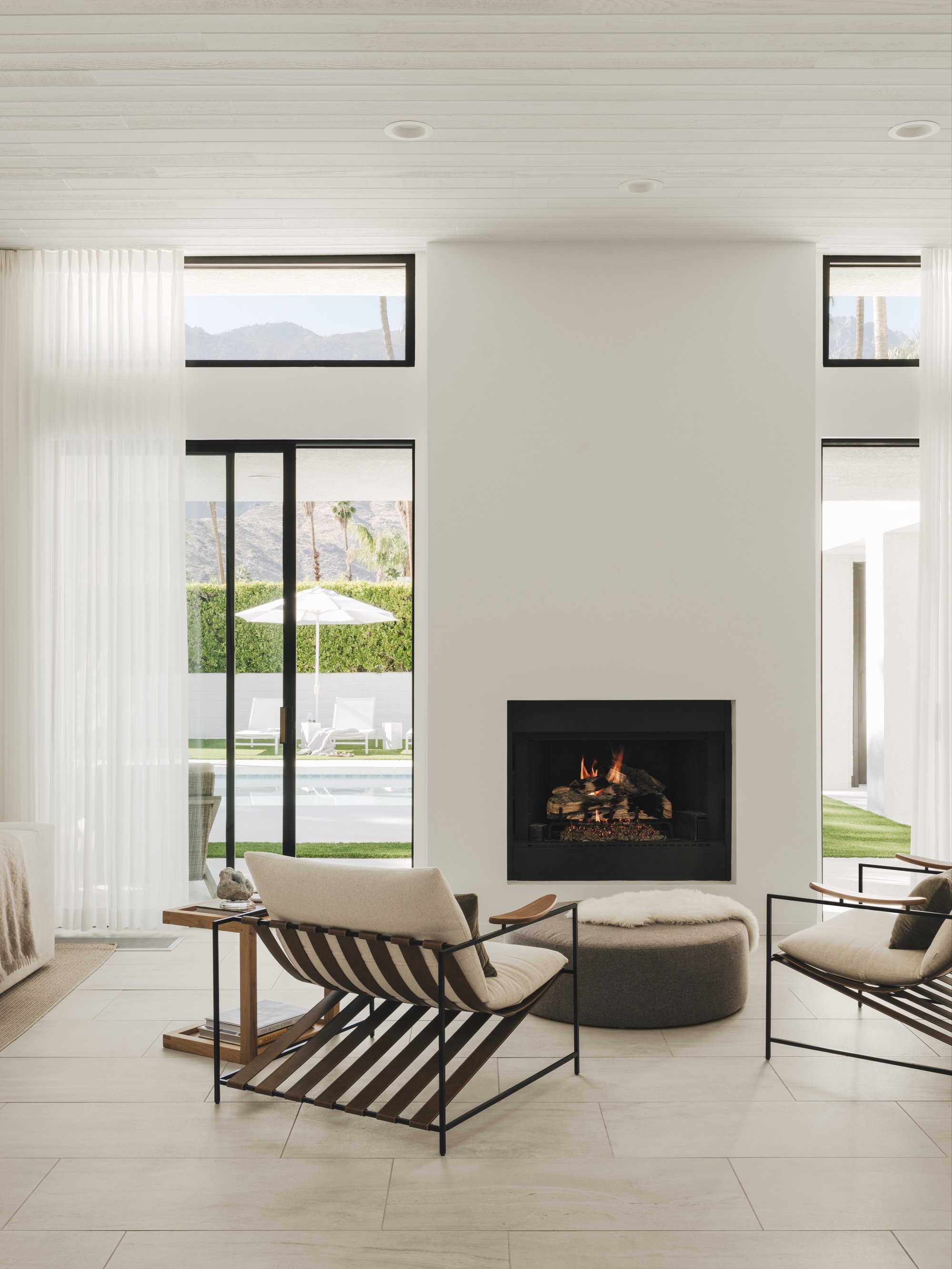
When choosing fabrics for window treatments for small rooms, a great place to start is to opt for organic textures. Other considerations are the the style of the room, as well as how much light you want to flood into the space; in a small room, keeping things as light as possible is often the goal to create a fresh, airy atmosphere.
'I like to go for linens, cotton, and more organic and sustainable fabrics,' says Joshua Smith, principal and founder of Joshua Smith Inc. 'When selecting your specific fabric, it’s important to determine the formality and application of the space,' Joshua adds. 'If I’m installing in a luxe New York City apartment, I’m probably not going to select a heavily textured linen, whereas if it’s a country house, I’d do that chunky linen any day!
'Sheers are so amazing in a small room because they give us the ability to add verticality and drapery without feeling heavy or weighing down a space,' Joshua explains about his first choice of curtains. 'They bring a softness to very hard lines of architecture and allow light to still filter in while providing privacy. We want all the light to come in during summer.'
2. Choose drapery for softness
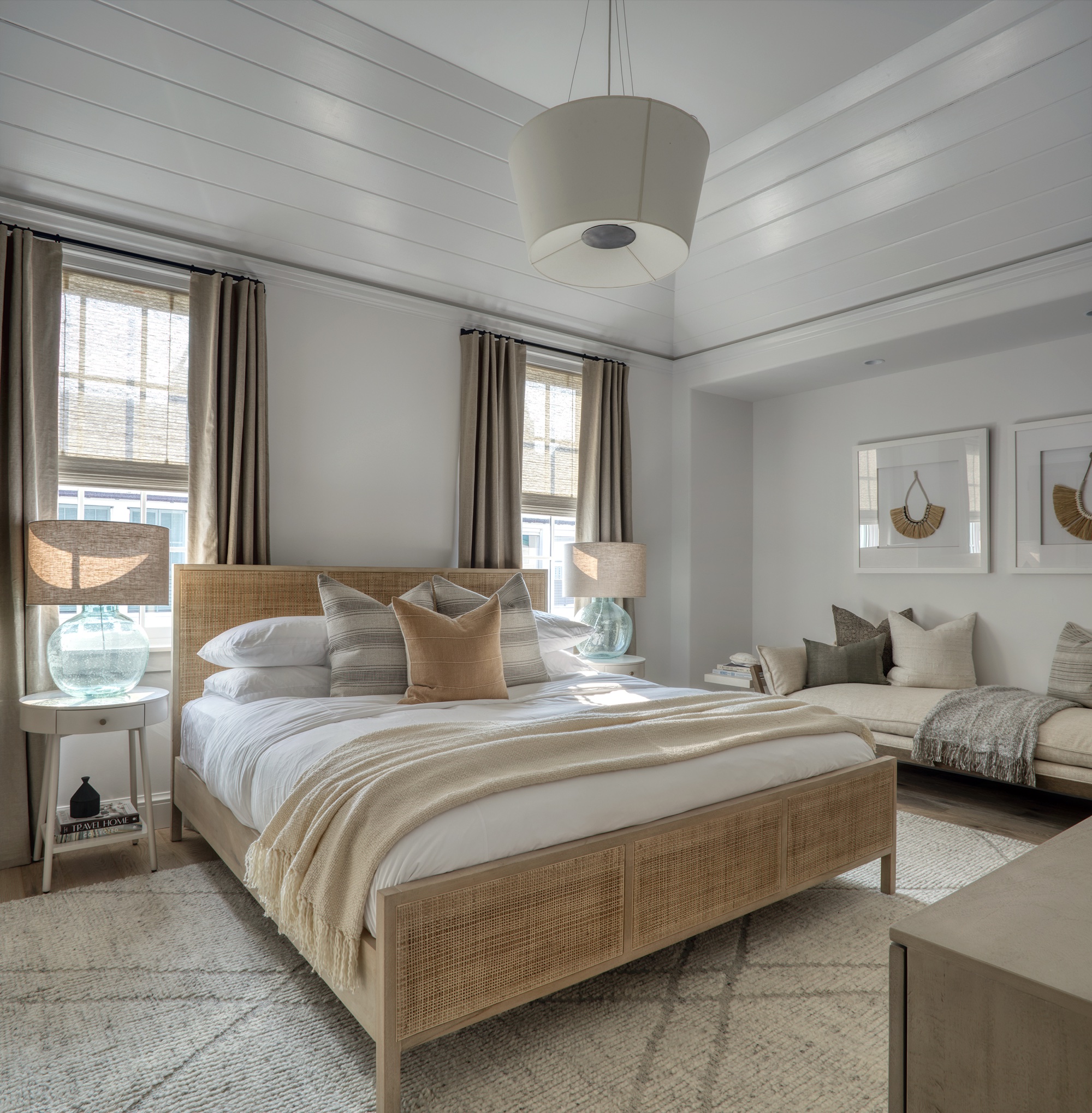
'In general, I think the most popular way to treat a window for both aesthetics and function is with drapery,' states Brad Ramsey, Principal and Founder of Nashville-based Brad Ramsey Interiors. 'There are lots of ways to layer a window, but nothing brings as much softness and individuality to a small space as drapery does.'
So, if you were concerned that a small room couldn't take drapes or curtains, think again. You can actually make a small room feel bigger by thinking about how high to hang a curtain rod. Placing your curtains just below the ceiling line (as opposed to just above the window line) will 'extend' the space and add visual height.
'I typically take any drapery panel to just below the ceiling or trim to create the illusion of height, which is especially important in small rooms,' Marie Flanigan, principal of Marie Flanigan Interiors comments.
And, when it comes to drapery style, Brad adds: 'We do a lot of floor to ceiling ripplefold drapes. No pinches and no pleats, just beautiful and architectural ripples of fabric to frame a window. Though both are beautiful in the right setting, I think ripplefold is a much more popular look than the more traditional pinch pleat panel on a rod and rings.'
3. Add texture with woven shades
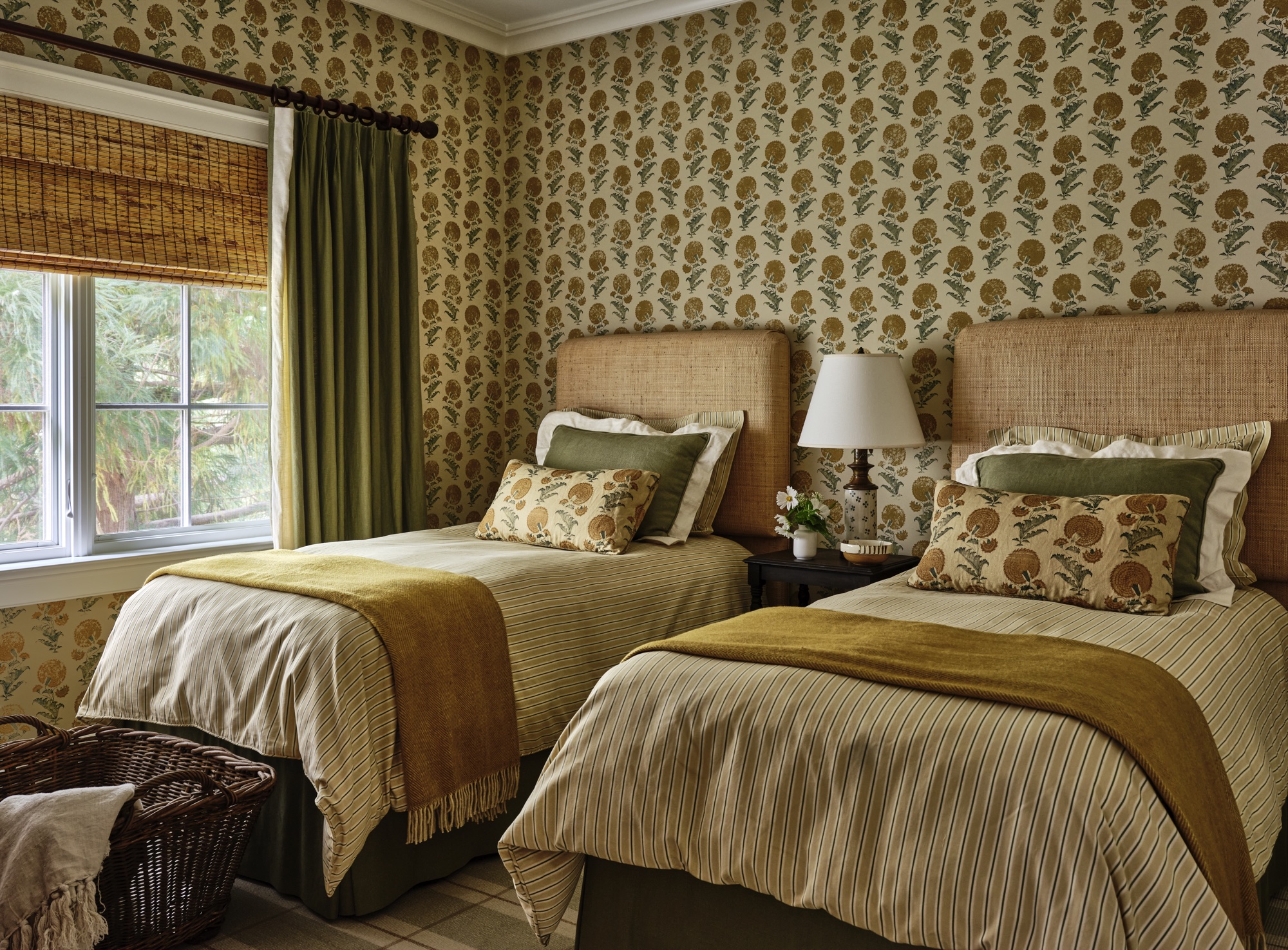
If your preference is for blinds, opt for woven shades for a look that's on-trend yet timeless. Woven shades work to add texture and warmth to a space, while also offering a good level of privacy.
'Roman shades are a cost-friendly alternative to drapery and a stylishly tailored way to dress a window,' Joshua Smith says. 'And woven shades are a go-to, especially in small kitchens and small bathrooms.'
'Texture is everything when you are going after understated elegance, so texture becomes your best friend when you choose less color and pattern.'
4. Layer up for form and function
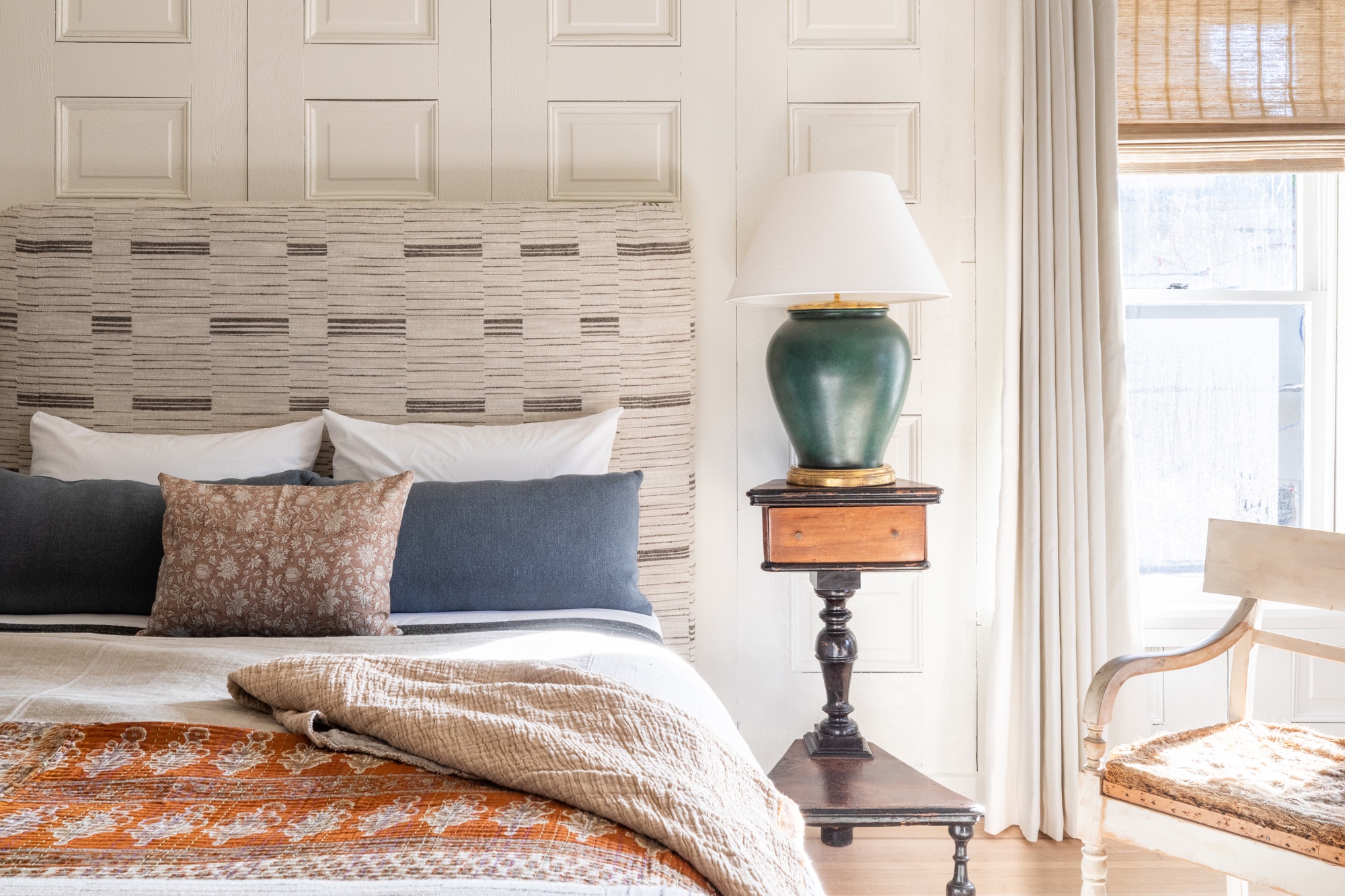
Woven shades work well on their own but are also the designers' go-to for teaming with other window treatment styles, particularly sheer drapery.
'My go-to window pairing for small spaces is a beautiful woven wood shade with a sheer drapery,' confirms Marie Flanigan. 'Both of these elements also work well on their own. Woven woods are wonderful solutions for allowing natural light and adding gorgeous texture. Further, woven woods can be customized to offer privacy backing or full blackout based on the space’s need.
'I love to include a gauzy sheer to beautifully frame a window, also allowing ample sunlight, which will make a small room feel bright and inviting.'
And Brad Ramsey is also a fan of this stylish coupling, adding: 'There are lots of alternative options for window treatments like roman shades, roller shades and textural woven shades. These can be light filtering, privacy or even blackout-lined to meet the function required.
'We often layer a small bedroom window with a woven shade and blackout drapery together. So, you can even start with one layer now and add to it over time for a more luxe look.'
Another way to layer your window treatments in a small room is to use different styles of treatments in the same fabric and colorway for a curated look that also adds visual innterest, depth and dimension. The beautiful room by Joshua Smith Inc below shows how blackout drapes and Roman shades in the same hue allow for a cohesive space that's also interesting and light.
5. Think outside the fabric
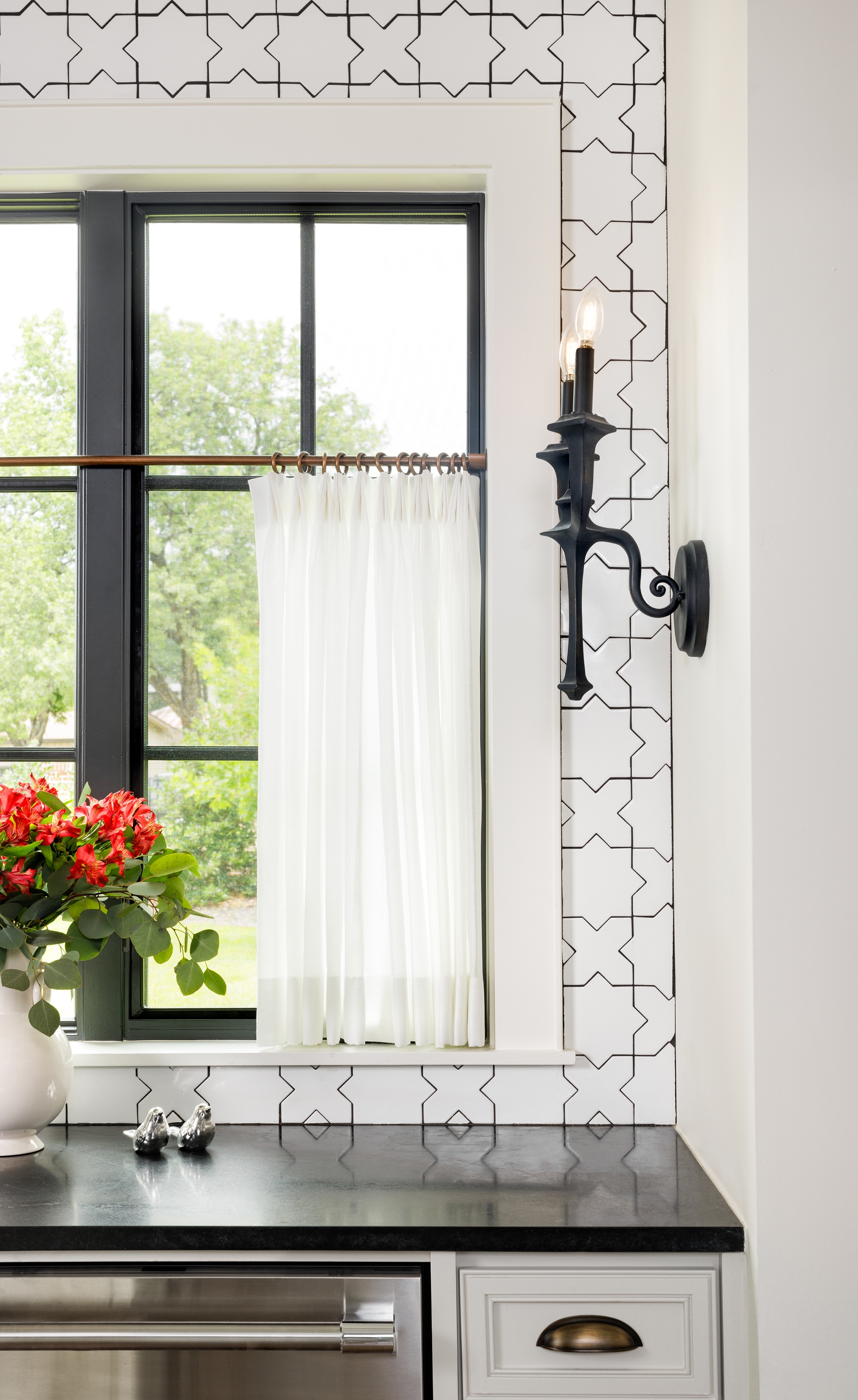
In small rooms, letting in the natural light is key. But how can you do that while simultaneously maintaining privacy? One way to perfectly blend the two is to hang drapery across the window so that the top part is left uncovered (as seen in the small laundry room above by Maestri Studio).
A part drapery window treatment is also a soft, tactile alternative to frosted windows in a bathroom, and will work to create a prettier finish while upholding necessary privacy levels, as seen below.
6. Install shutters for flexibility and character
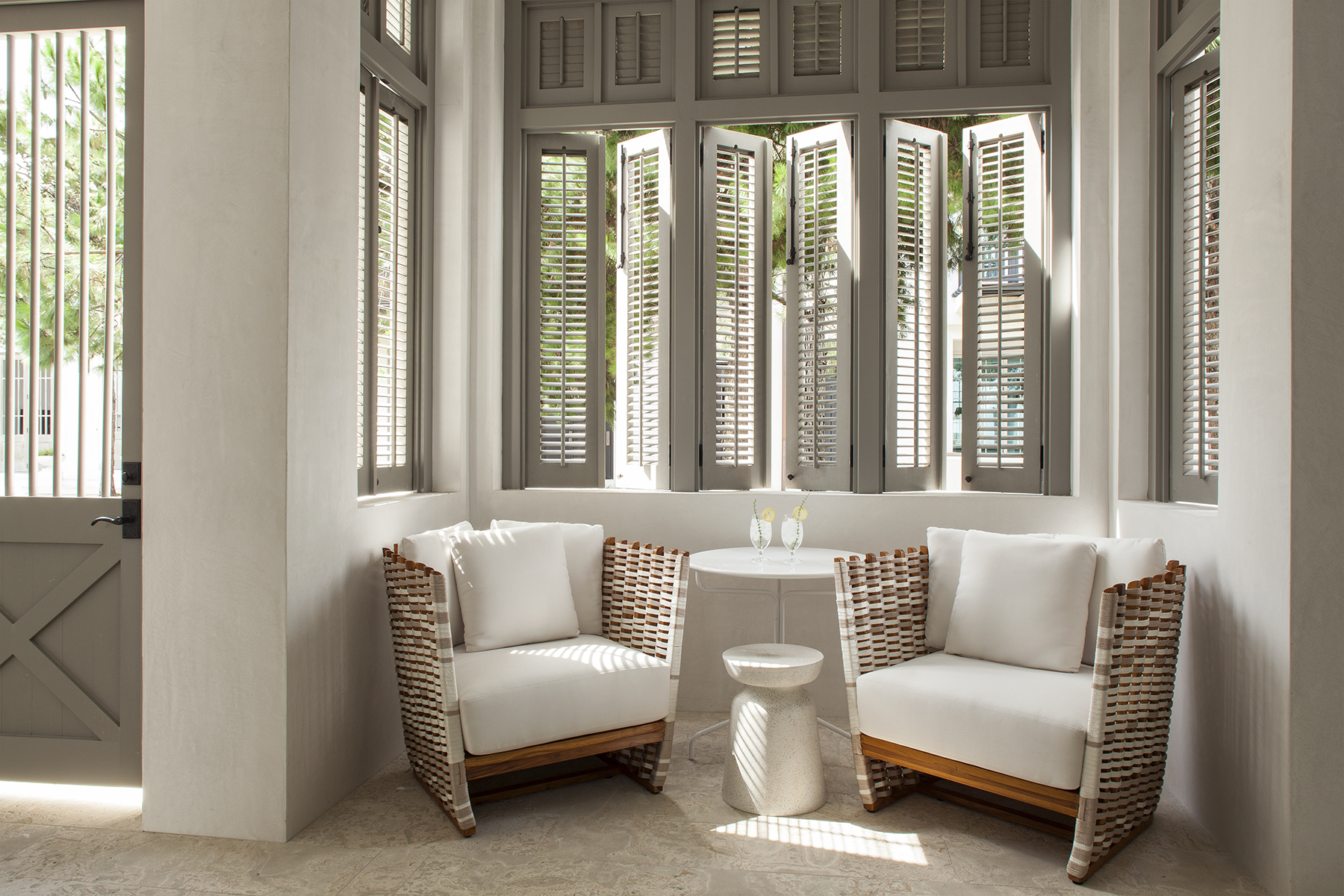
Wooden window shutters are a super-versatile choice that can offer privacy and dappled light at the same time, full privacy when closed, and a flood of light when fully open.
As well as being functional, they make a design statement that adds warmth and character to a space.
Commenting on the beach house above, Brad Ramsey says: 'This has an exterior covered entry that creates flex space coming in from the ocean before entering the actual house.
'The gate opens out to a communal green space with walking paths, and so we wanted to create the option for some privacy if needed. The shutters provide not only privacy and protection from the rain when closed, but also the option to swing them out to make the space feel wide open.
'But the best part about the shutters is the way they play with the light as it streams through. They add so much warmth and character to the space.'
Shutters can also add a splash of elegant French design to a space.
Victoria Walker, Trends Expert at Hillarys, says: 'French interior design blends timeless elegance with a touch of modern glamor. This style seamlessly intertwines classic and contemporary elements, making it a sought-after choice for 2024.'
For an even more French style that lets lots of light in, place shutters on the lower windows only.
'Window dressings that cover the lower half of your window such as café style shutters are quintessentially French. They bring a “Louvre’ly” dose of Parisian style while keeping things cozy and letting natural light flow in.'
Be The First To Know
The Livingetc newsletters are your inside source for what’s shaping interiors now - and what’s next. Discover trend forecasts, smart style ideas, and curated shopping inspiration that brings design to life. Subscribe today and stay ahead of the curve.
Ruth Doherty is a lifestyle journalist based in London. An experienced freelance digital writer and editor, she is known for covering everything from travel and interiors to fashion and beauty. She regularly contributes to Livingetc, Ideal Home and Homes & Gardens, as well as titles like Prima and Red. Outside of work, her biggest loves are endless cups of tea, almond croissants, shopping for clothes she doesn’t need, and booking holidays she does.
-
 Turns Out the Coolest New Café is Actually In Your Kitchen — Here's How to Steal the Style of TikTok's Latest Trend
Turns Out the Coolest New Café is Actually In Your Kitchen — Here's How to Steal the Style of TikTok's Latest TrendGoodbye, over-priced lattes. Hello, home-brewed coffee with friends. TikTok's 'Home Cafe' trend brings stylish cafe culture into the comfort of your own home
By Devin Toolen Published
-
 5 Bathroom Layouts That Look Dated in 2025 — Plus the Alternatives Designers Use Instead for a More Contemporary Space
5 Bathroom Layouts That Look Dated in 2025 — Plus the Alternatives Designers Use Instead for a More Contemporary SpaceFor a bathroom that feels in line with the times, avoid these layouts and be more intentional with the placement and positioning of your features and fixtures
By Lilith Hudson Published
